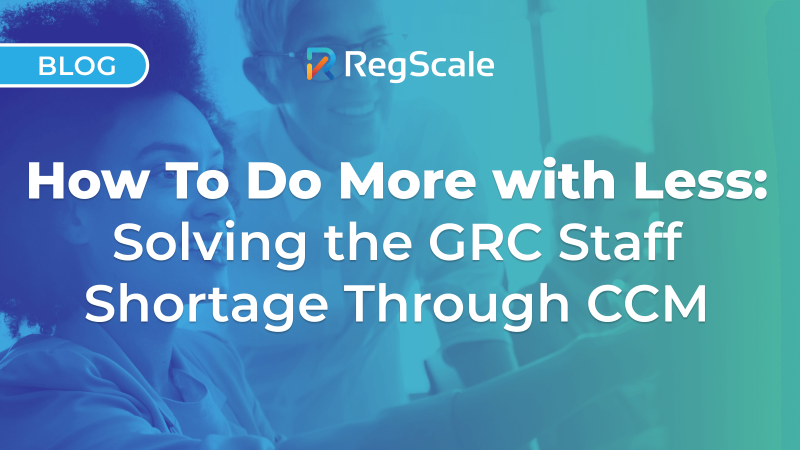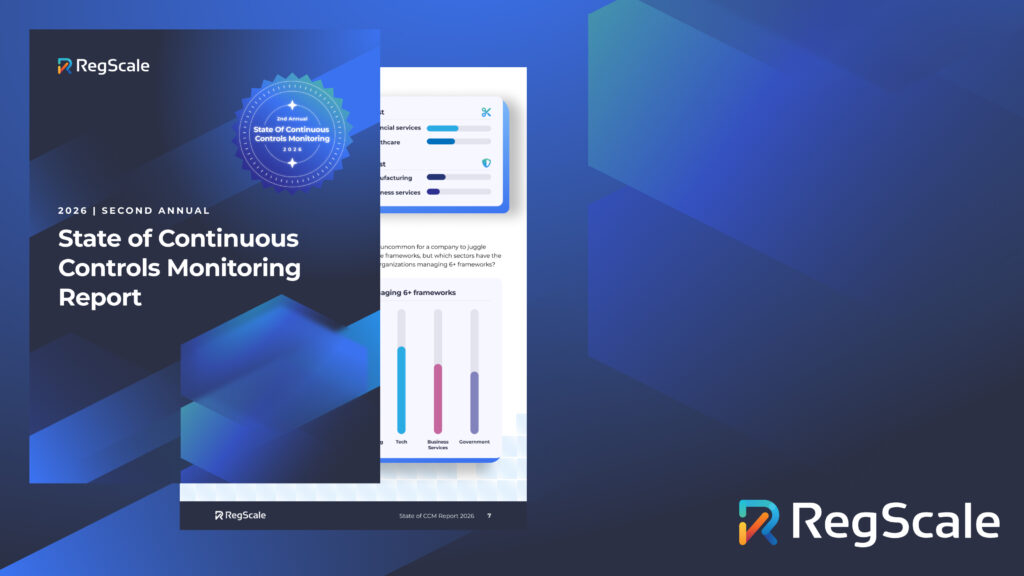How To Do More with Less: Solving the GRC Staff Shortage Through CCM

It’s 9 AM, and you’re already juggling three urgent priorities. You’re in charge of GRC at your company, and you’ve just gotten a time-sensitive request from the CISO: you need documentation for an unplanned regulatory examination next week. Meanwhile, your senior compliance analyst just put in their two weeks’ notice, and the audit committee is waiting for updates on their security framework implementation. As you glance at the 10 open headcount requests that have gone unfilled for months, a notification pops up about new privacy regulations requiring additional controls monitoring. It’s going to be a long day.
This scenario plays out daily in organizations around the world. Across every sector, GRC teams are stretched thin, with too many tasks for too few people. The numbers tell the story: according to the first-ever State of Continuous Controls Monitoring Report, 46% of CISOs acknowledge they lack the talent needed to meet upcoming regulatory requirements.
The burden of maintaining compliance, managing risk, and preparing for audits continues to grow — but the teams responsible for these critical functions aren’t growing with it. What’s behind the growing GRC staff shortage? And what can be done about it? Today, we’ll dive deep into the problem and identify some actionable solutions.
Too many tasks, not enough staff
The talent crisis in GRC and cybersecurity has evolved from a challenge into a critical business risk. Don’t buy it? According to the World Economic Forum, there is a global shortage of more than 4 million cyber professionals. Compare that to a total of only 5.5 million active professionals in the entire global cybersecurity workforce, and we can see that nearly one in two cyber roles are currently unfilled.
A 2024 Fortinet survey reveals a similarly grim picture. 70% of respondents agreed that the cybersecurity skills shortage creates risks for their organizations, and nearly a quarter — 72% — said it is difficult to find candidates with the right certifications.
Our State of CCM Report agrees. Its research reveals that 54% of CISOs identify staffing challenges as their primary obstacle to implementing new frameworks — and this shortage couldn’t come at a worse time. Organizations face an expanding regulatory landscape, increasingly sophisticated cyber threats, and growing board-level scrutiny of their risk management practices.
Several factors are converging to create this perfect storm. First, the rapid pace of new regulations and frameworks — from DORA to GDPR updates to emerging AI governance requirements — demands specialized expertise that’s increasingly scarce.
Second, the traditional GRC skill set is evolving. Today’s GRC professionals need to be multi-hyphenates: part compliance expert, part technologist, part strategic advisor, and more. Finding candidates who check all these boxes is like searching for unicorns.
The consequences of this staffing shortage have rippled through industries. At the organization level, critical projects face delays of months or years. Manual processes consume valuable team resources, leading to burnout and further turnover. Documentation quality suffers, with teams rushing to keep up with mounting demands.
On a larger scale, these staffing shortages create systemic vulnerabilities that weaken the collective security posture of supply chains, financial networks, and critical infrastructure. This is particularly concerning for regulated industries like healthcare and financial services, where staffing shortages can lead to compliance failures that erode public trust.
We all know that when GRC teams are understaffed, they’re forced to make difficult trade-offs. Routine controls monitoring gets postponed to handle urgent audit requests. Strategic initiatives take a back seat to tactical firefighting. The result is increased organizational risk, delayed digital transformation initiatives, and a GRC function that’s perpetually in reactive mode.
Facing the skills shortage head-on with CCM
To tackle the talent shortage, forward-thinking organizations are turning to Continuous Controls Monitoring (CCM) and automation to fundamentally transform how their GRC teams operate. In other words, rather than trying to hire their way out of the problem, savvy organizations are embracing automation to multiply the effectiveness of their existing teams.
For an example of how CCM can help supercharge your existing staff, let’s begin with evidence collection — traditionally one of the most time-consuming aspects of compliance work. Instead of GRC analysts spending hours manually gathering screenshots, system logs, and configuration data, CCM automatically collects and validates evidence in real-time. This isn’t just faster; it’s also more reliable, since it eliminates the human error inherent in manual collection and helps you maintain always audit-ready status.
The efficiency gains extend far beyond basic automation. Modern CCM platforms recognize that many controls serve multiple frameworks — that is, what satisfies a particular requirement for SOC 2 will also align with similar requirements in ISO 27001 or NIST. By mapping these overlaps automatically, CCM eliminates the redundant work of validating the same control multiple times for different frameworks.
CCM also helps to streamline and speed up documentation by maintaining a continuous, real-time record of control effectiveness, complete with time-stamped evidence and detailed audit trails. When auditors come calling, teams no longer need to scramble to reconstruct their compliance story; it’s already there, automatically documented and ready for review. Organizations using RegScale have reduced their audit prep time by up to 60%, while also improving the quality and consistency of their documentation.
Perhaps most importantly, CCM transforms how GRC teams allocate their limited human resources. Instead of spending most of their time on manual testing and evidence collection, skilled professionals can instead focus on mission-critical tasks like proactive risk management. This allows even small compliance teams to maintain robust GRC programs that can meet both current and future regulatory requirements.
Conclusion: Joining the 14%
According to the World Economic Forum, over two-thirds of organizations report a moderate-to-critical skills gap in cybersecurity. Only 14% are confident in having the right people and skills to meet their security objectives. (Even more starkly, our State of CCM Report reveals that only 5% of CISOs consider their compliance program to be optimized for efficiency and continuous improvement.)
Of course, we’d all like to see those stats rise to 100%. But in the meantime, what can you do to be part of the minority of businesses who feel like they have skilled enough staff and a strong enough compliance program for the work at hand?
The answer lies in working smarter, not just hiring harder. As we’ve seen, organizations that embrace Continuous Controls Monitoring are effectively doing more with less, transforming their GRC operations from manual and reactive to automated and strategic.
It’s ultimately not about survival, or even waiting it out until you can finally fill those open roles on your team. It’s about building a more resilient GRC function that can scale to meet future challenges, whatever they may be.
For a deeper dive into how organizations are addressing the GRC talent shortage through automation — including detailed insights from leading CISOs — download our full 2025 State of Continuous Controls Monitoring Report.
Ready to get started?
Choose the path that is right for you!
Skip the line
My organization doesn’t have GRC tools yet and I am ready to start automating my compliance with continuous monitoring pipelines now.
Supercharge
My organization already has legacy compliance software, but I want to automate many of the manual processes that feed it.
